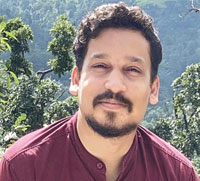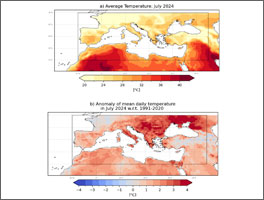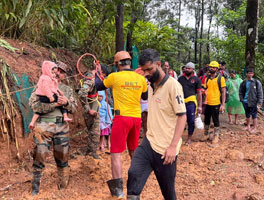 |
Dear readers,
Welcome to the Climate Weekly newsletter from the Centre for Science and Environment’s Climate Change programme and Down to Earth.
This week, we highlight the extreme rainfall events that continue to disrupt life across various parts of India. On July 30, Wayanad in Kerala received 6% of its annual rainfall in just a few hours. The area, which had received less than normal rainfall overall in July, experienced very heavy rainfall on July 30, with some places experiencing extremely heavy rainfall. This led to devastating landslides in the region, resulting in the deaths of over 300 people. Experts have attributed the uneven rainfall and resulting catastrophic events to anthropogenic activities in the region and climate change. Quarrying, hill levelling for construction, extensive road building, expansion in hilly areas, and monoculture farming have all contributed to landslides triggered by heavy rains, which are intensified by climate change. Experts are advocating for a dedicated weather warning system that specifically issues warnings for Kerala’s Western Ghats region. They have also emphasized the need for a high-resolution weather prediction model to better prepare for and respond to such disasters. Far from Wayanad, in Himachal Pradesh, cloudbursts, floods, and heavy rains in various locations of the state have resulted in over 52 people being reported missing and 4 people confirmed dead as of August 1. This occurred despite the state recording 36% less than normal rainfall between June 1 and July 30, highlighting the irregularity in the rainfall pattern.
The ongoing Paris Olympics has also faced challenges due to the July heatwaves that gripped France and other Mediterranean countries. The World Weather Attribution network has declared that this heat event would have been virtually impossible without human-induced climate change.
Finally, in a reply, the Government of India recently informed the Parliament that it has no plans to classify heatwaves as a notified disaster. This decision contrasts with recommendations from experts and activists who advocate for formal recognition and specific response strategies.
|
|
 |
| |
 |
|
| |
 |
 |
| |
By - Trishant Dev
Climate Change, CSE
|
| |
|
 |
|
|
| |
 |
|
| |
| EXTREME WEATHER TRACKER |
| |
July Mediterranean heatwave virtually impossible without human-induced climate change: WWA, 31 July 2024
|
 |
 |
|
|
| |
 |
|
| |
 |
 |
Wayanad received 6% of its annual rainfall in just a few hours on July 30: DTE Analysis, 31 July 2024
|
|
|
| |
 |
|
| |
|
|
| |
|
|
| |
|
|
| |
 |
|
| |
CLIMATE NEWS | SCIENCE| IMPACTS| POLITICS |
|
| |
 |
|
| |
|
|
| |
 |
|
| |
|
|
| |
 |
|
| |
|
|
| |
 |
|
| |
|
|
| |
 |
|
| |
|
|
| |
 |
|
| |
|
|
| |
 |
|
| |
|
|
| |
 |
|
| |
|
|
| |
 |
|
| |
|
|
| |
 |
|
| |
|
|
| |
 |
|
| |
|
|
| |
 |
|
| |
|
|
| |
 |
|
| |
|
|
| |
 |
|
| |
|
|
| |
|
|
| |
| Data Centre |
|
Online Training |
| |
|
|
|
|
|
|
|
|
| |
|
|